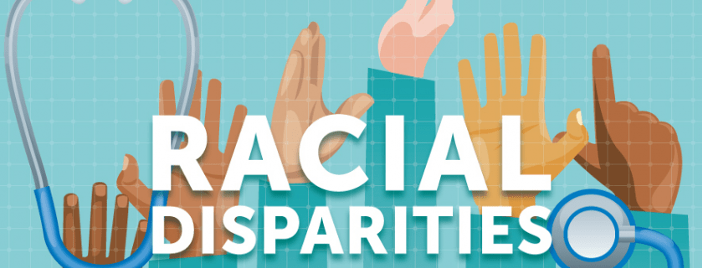This article originally appeared on the National Hispanic Council on Aging (NHCOA) blog.
NHCOA will be hosting two upcoming telephone town halls, in English and Spanish, to give space for communities to engage in education and advocacy around COVID-19. Learn more and register here.

It is becoming increasingly clear, based on evolving data, that COVID-19 is having a more devastating impact on Blacks, Latinos and American Indians across the nation. These inequities further highlight the existing health inequities that are borne out of systematic and structural racism that has existed for centuries in the United States. These systemic and structural inequities result in financial insecurity, substandard housing, and jobs that cannot be done remotely, do not offer health insurance and potentially limited access to healthcare. These realities lead to many of the conditions that heighten the risk for becoming infected with COVID-19.
As states and cities begin releasing COVID-19 outcomes by race/ethnicity, the data show that Blacks, Latinos and American Indians are facing higher risks when it comes to the disease caused by the novel coronavirus. For instance, in Connecticut, Blacks represent roughly 12% of the population, but 17% of COVID-19 positive cases and 16% of COVID-19 attributable deaths. Hispanics make up 16.5% of Connecticut’s population but 24% of the COVID-19 positive population. In Chicago, Blacks are dying from COVID-19 at six times the rate of other racial groups. While Blacks make up 30% of the population of Chicago, IL, they comprise approximately 68% of the COVID-19 attributable deaths and more than half of the confirmed cases. According to hospital data released by the Centers for Disease Control and Prevention, about 1 in 3 people (33%) who become sick enough to require hospitalization from COVID-19 were African American; however, African Americans only make up about 13% of the United States’ population.
In Oregon, Latinos are disproportionately affected by COVID-19. As of April 14, 2020, approximately 22% of people who tested positive for COVID-19 were Latino; however Latinos only comprise 13% of Oregon’s population. These numbers could be even higher, as almost a third of the population did not report ethnicity.
With regards to American Indians, Navajo Nation is just one example of a community suffering. Navajo Nation has more confirmed cases of COVID-19 per capita than every U.S. state except two (New York and New Jersey). On April 13, 2020, Navajo Nation reported 813 confirmed positive cases and 28 COVID-19 attributable deaths. There are approximately 332,000 enrolled members in this Nation, with 173,667 citizens living on the reservation. The number of confirmed cases is roughly 468 per 100,000 people. The rate of infection surged 367% in just two weeks.
New Orleans, LA, Milwaukee, WI, Detroit, MI, Kansas City, MO, and Chicago, IL, are just a few of the cities that have experienced dramatic racial disparities in coronavirus impacts. Health experts, including Dr. Anthony Fauci, Director of the National Institute of Allergy and Infectious Diseases and a member of the White House Coronavirus Task Force, acknowledged that populations of color are often hit extra hard by health crises, and this pandemic is no different.
Health disparities and health inequities existed prior to this pandemic. So, it comes as no surprise that these inequities exist. Experts explain that racial inequities in COVID-19 cases and deaths exist for several reasons, including
- Communities of color are more likely to live in densely populated areas where the virus can spread easily,
- They are more likely to work the low-wage service jobs that require close contact with many people and have been exempted from stay-at-home orders,
- They are more likely to be uninsured when compared to whites,
- Immigration status is a barrier to health insurance coverage. The newly passed public charge rule has had a huge effect on immigrant communities who out of fear, are either not enrolling or are disenrolling in public benefits like Medicaid.
- They are more likely to have chronic diseases and other conditions that can exacerbate COVID-19, and
- Communities of color often face conscious or subconscious discrimination in medical treatment (shown by research), meaning if hospitalized with COVID-19 symptoms, racial minorities may also be less likely to receive effective treatment.
Incomplete data on race/ethnicity further compound these inequities. Even at the federal level, the CDC report on hospitalizations for Covid-19, released on April 8, 2020, saw that race/ethnicity was missing for most of the data. While COVID-19 has affected millions of Americans from all backgrounds, COVID-19 is devastating communities of color due to the systemic and structural racism and inequities that existed long before this pandemic hit our borders. The time has come for those in positions of power to face these inequities and systems head on to prevent further inequities.
Sources:
https://www.wbur.org/hereandnow/2020/04/10/chicago-coronavirus-lori-lightfoot
https://www.nytimes.com/2020/04/14/opinion/coronavirus-racism-african-americans.html
https://www.chcf.org/blog/covid-19-shines-harsh-light-racial-ethnic-health-disparities/
The opinions expressed in this article are those of the author and do not necessarily reflect those of the Diverse Elders Coalition.
